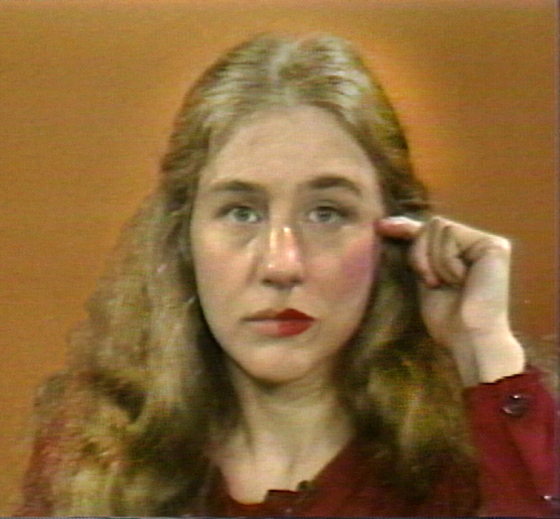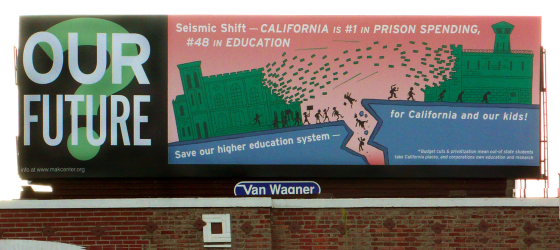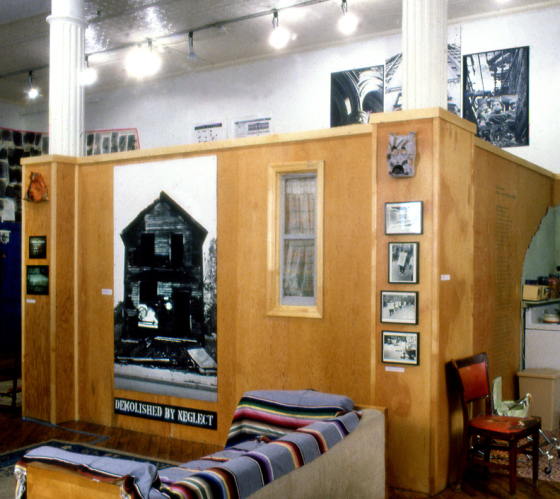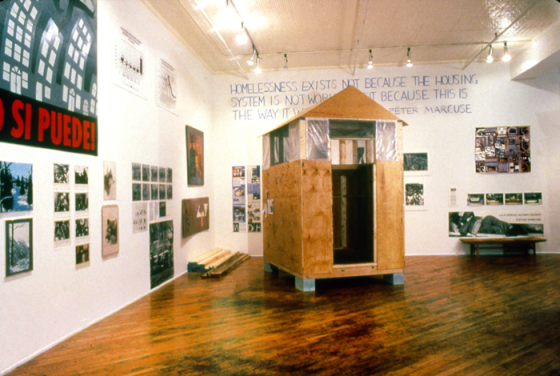The censorship as an internal mechanism. Interview with Martha Rosler (part two)

"Martha Rosler Reads Vogue", With Paper Tiger Television, video, 1982
[PL]
It was in 1982 when you read Vogue ["Martha Rosler Reads Vogue" 1982].
A live performance on public access TV....
Yes. Now it is 2014. Vogue magazine still exists, it is still about fashion, beauty, luxury and so on. The situation is not only the same. I think it has gotten much worse...
That video was produced under the most ridiculous conditions. It was a live broadcast in 1982. There was no rehearsal. We walked into the studio. The cameras and switchers were operated by art students, who had never done that before. I've shown it since then, but only rarely and then, after about 20 years, it found its time again. A generation of younger women have seen it and have asked: "What is different now? Nothing!". This video was shown in Paris with a huge audience of young women, when I was present. That was something to see. In the meantime, feminism had kind of collapsed - it had gotten academicised. In particular, France's very vibrant feminist movement had collapsed, and feminism had completely disappeared from public discussion. But it was interesting to see so many young women suddenly wanting to talk about these issues. At present, it is actually screened regularly - and it is available online. The problem of others trying to define women's social position for them and to dictate their very "nature" not only still exists, it has become ‘metastasized' and it is aggressively pushing forward the idea that each young woman should try to make herself into some kind of vibrantly active object, as opposed to an active subject: the idea of women's subjectivity is completely entangled with the idea of being rather than becoming. Women's magazines, and other sources, tell us this at every moment- to become sophisticated in remaking our appearance so as to be more a desirable and appealing "being," and not more satisfied in ourselves.
So probably you've heard already that in Poland...
Gender ideology! That is at the heart of my project. Our opening discussion is on gender, and it is a fairly assertive one, organized and led by Ewa Majewska. I have to say that from my perspective, this attack here in Poland on what they are referring to as gender is extremely primitive. There is no other word for it. I understand it as an impetus to solve a social problem. You can proclaim, ‘We were miserable under communism, since communism is evil. But now that we have capitalism we are still miserable, but capitalism can't be evil. So let's talk about something else! Let's say that it is you women who have messed everything up - and by the way - let's denounce that foreigner Judith Butler because she is a monster.' [laugh]
Yes. At first when I've heard about it I just thought it should be ignored...
As it will go away in a while...
Yes, but then it didn't go away and got more and more ridiculous. I'm quite concerned about this resonance or response within society. I think it is also a good point to talk about censorship. I know that one of your works - "Lesson for Today" which you did in 1995 and in 2010 was censored.
Only the first part was censored, in 1995. This was a project that both times I did with my son, the cartoonist Joshua Neufeld. The work was displayed in Los Angeles, in an indoor location. The work's message was that in California, more money was spent on prisons than on universities. When I was invited to participate in a public billboard project in LA in 2010, I decided to do a new version, but with the same message. The new work was mounted on Sunset Boulevard, one of Hollywood's main streets. It was not censored because by 2010 everyone was aware that the budget for education is lower than for prison -It was a matter of public knowledge and serious concern.

Lesson For Today, "With Josh Neufeld. Sunset Boulevard", Los Angeles, 2010
I'm thinking what censorship really is. A description which comes to my mind is "keeping the voice which should be heard in public as private" - but of course - it is just a part of it. What is your experience in that matter?
Censorship is a big topic, and people have a tendency to define censorship as whatever they what it to mean. Let's imagine that in a public discussion, a person or a group of people keep interrupting. You let them speak, but then ask them also to listen, and to let other people to speak. If they don't accept that but keep on talking over other people, now they are actually preventing discussion - in effect, censoring everybody else. Sometimes people feel that if they are not going to be permitted to scream forever, they are being censored. That's a very pig-headed point of view. Censorship is also powerfully effective when it is internalized - that is one difference between an authoritarian system like communism and the US's self-described "free world system". Authoritarian systems tell you to keep quiet, but under more open regimes people tend to think of keeping quiet as their own internal impulse. They feel that they have chosen to do so .... they believe they know when to speak and when not to, and in the end they somehow decide to keep quiet. That is censorship as an internal mechanism. Michel Foucault and others have pointed that out, but I first came across this analysis when I was a student, in Henri Lefebvre's book Critique of Everyday Life. Censorship makes you feel responsible for the choice not to voice what you might really like to say, which is close to how you opened this question: censorship is keeping private that which should be heard in public. It is rare when people can say "you"-or some other institution-censored me. Sometimes what someone or some group might described as censorship is actually an attempt on their own part to foreclose another person or group's point of view, as I said at the outset. This mechanism is, oddly enough, often found with dominant religions, which constantly claim that they are victims if there is any consistent disagreement with their dogmas.

Martha Rosler, photo.: Bartosz Górka
Like in Poland?
Exactly, but not only... It is similar in the US with Catholics and many evangelical Christians. They are extremely vocal in every public discussion about morality and ethics while persistently claiming to be victims - victims of what? Of the fact that someone, and especially some law, disagrees with them! These dissenting opinions lead them to imagine they are hunted and pursued, when in fact they are always given access, public and private, to the widest audiences. It is an inversion of logic and fact.
Yes; it is sad as it turns discussions into an ideology of slogans. In fact - as you said - it prevents discussion. What was the most important for you to prepare the show and the project here?
In respect to the exhibition element, I was interested in having a feminist voice and a more general political voice - my voice. There are antiwar photomontages on display from the series "House Beautiful" that I produced during two major American period in which we were at war (wars in Vietnam and in Iraq/Afghanistan), also "Body Beautiful" which is a series of early feminist photomontages. I wanted to include war works because Poland was an avid participant in the latest war, in the Gulf. The works about women I felt were of immediate interest to the discussion in Poland. There is a work about waitresses - it describes how to recognize waitresses by their clothing and their demeanor, but that means it is about class behavior. There are many video works in the show, which take on more general questions about women, politics, economy, and war. I'm interested in the crossover of public and private. I am particularly interested in how women are seen within society - they are generally identified only with the private sphere of domesticity, but in fact there is no private sphere separate from the public sphere; they operate hand in hand. I'm interested in the domestic sphere and women's continuing efforts to step outside it into the wider world. The garage sale itself is not only a social form that consists of the circulation of commodities; it also provides a way for women to enter a liminal space between the private home and the community, in which anyone can come and buy the things that are being sold. The reason the garage sale became such a widespread phenomenon in suburbia is that there, people are relatively separate from one another, inside private houses, but without the community centers and traditions of small towns. These sales give people, primarily women, a way to get together, to share as well as to profit.
But I'm also interested in city streets and places of transition like roads and airports. Places in which one must intersect with other people, but where the point is not to call attention to oneself-not as in a Sunday promenade-but simply to move through the space. I'm interested, then, in public spaces, the geopolitics of space, of war and labor, and so on. All of the works in the show deal with these questions. My subjects are pretty consistent. You can also break them down into food, clothing and shelter - as they intersect with public and private, ‘micro' and ‘macro' problems ...

"City: Visions and Revisions" , installation detail, z cyklu "If You Lived Here", New York, 1989
As you are interested in the city or more general urban space, what was the most striking when you first saw Warsaw?
That the center looks like a giant jumble of unplanned buildings! [Laugh]
Well, I suppose you are not alone with this impression.
I'm sure. It is quite striking especially if you come by train and you have to ask "Wow, what happened here? Who planned this?". You can find examples of Soviet monumentalism and neighborhoods built on the amazing plan of streets with grand vistas that become channels for a lot of wind. You have public amenities like public transportation - you have what seems like a great tram system. The US pretty much gave up on this during the automobile era but now is trying to get it back. Then there is the famous housing problem of a city with extremely expensive accommodation. That is partially an effect of this transitional moment, with buildings claimed by aristocrats and absentee owners who had their properties taken away. This is very hard to resolve, but there certainly should be tenant protections! Housing makes Warsaw an expensive city. The struggle of people in Poland-not only in Warsaw but for example in Poznan-to keep their homes especially when owners engage in brutal practices of harassment and eviction will be the topic of one of the discussions of my project, but unfortunately, it will take place after I have left the country. By the way, in New York City we experienced precisely this upward spiral of prices and forced evictions in the 1980s, when suddenly city life became desirable again for people with money, after it had been of little or no interest to them for the previous twenty years.
One thing that occurred to me in Warsaw and also Kraków is a kind of attempt to transform city life through the power of graphic design. I mean, at the very least, making the city an attractive tourist destination through a design program with bold graphics and very bright color as a signal of modernity. It seems like an effort to engineer an affective relation to space rather than a substantive one. If we look at New York's central square, Times Square, it has been transformed into a gigantic arena of spectacle - I love it because it is completely ridiculous. There is not much to do, unless you want to go the movies and eat crappy junk food, or go to a very expensive but unchallenging show at a theater, but the outdoor space-which has been transformed by the last mayor into a space to sit on metal benches- is full of flashing lights and immense advertisements. I had a similar experience, but more repellent, in Singapore, where I went to participate in the Singapore Biennale in 2011. I took a subway ride, and the subway itself is housed in gigantic underground spaces with gigantic adverts. When you take a lift up, you are in Times Square but a hundred times larger. I found it so overwhelming that I retreated back into the subway. I didn't want to step into that flashing-light scenario. It seemed like a great example of the neoliberal idea that you are just a lone self, wandering in the midst of an all-consuming, seductive spectacle. You have to make all kinds of decisions, which are not rational but rather just centered on consumerism and, simultaneously, an insidious culture of affirmation.
You are welcome as long as you are productive and as long as you can pay...
Yes, precisely so.

"Home Front Reading Room", installation detail, z cyklu "If You Lived Here", New York, 1989

"Homeless", installation detail, z cyklu "If You Lived Here", New York, 1989

